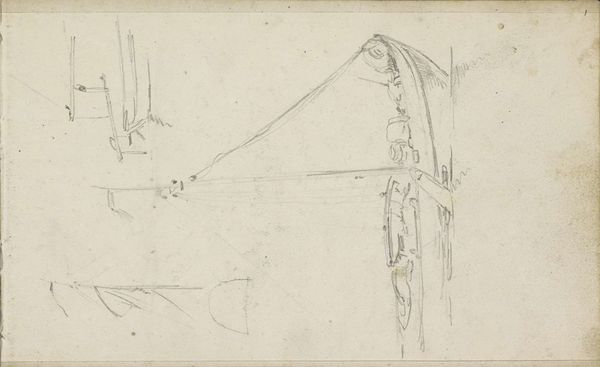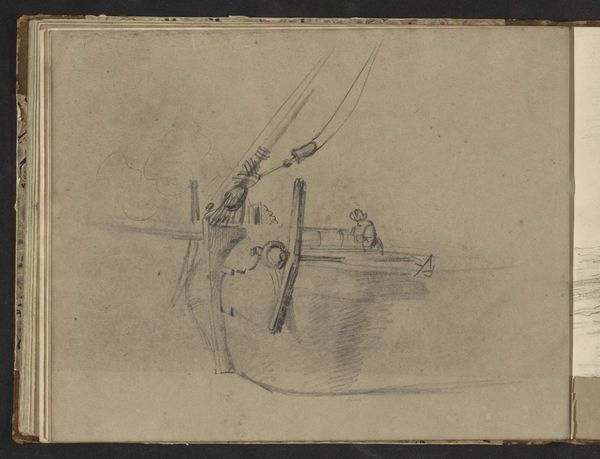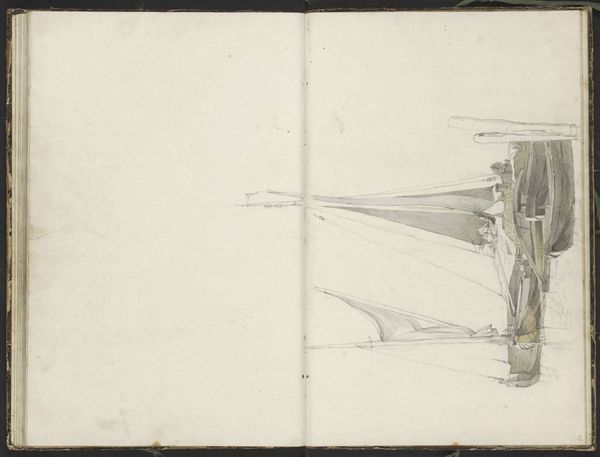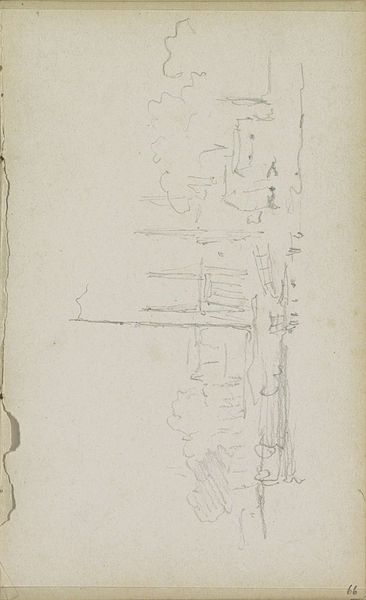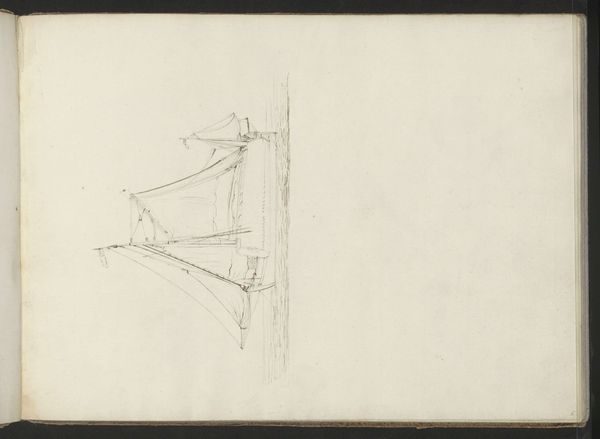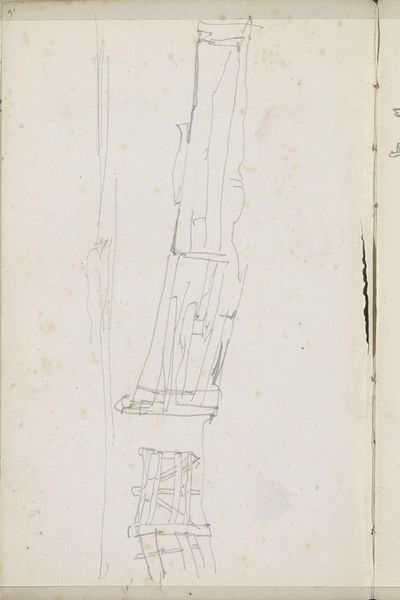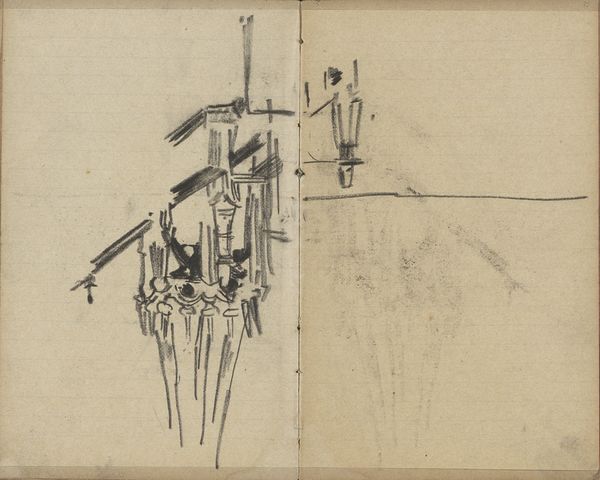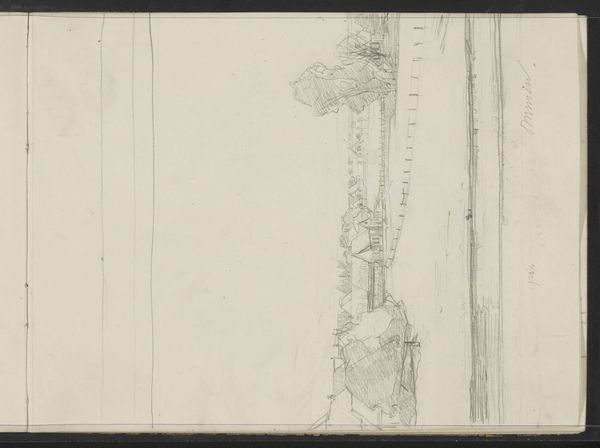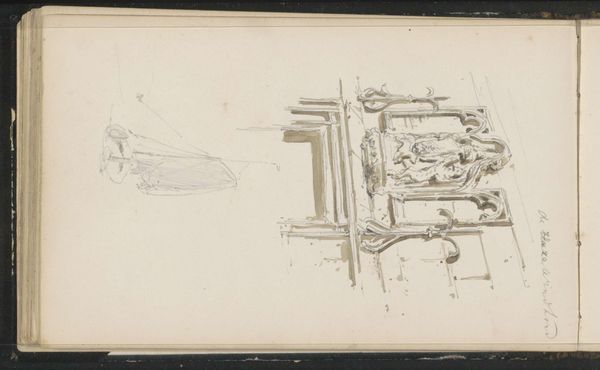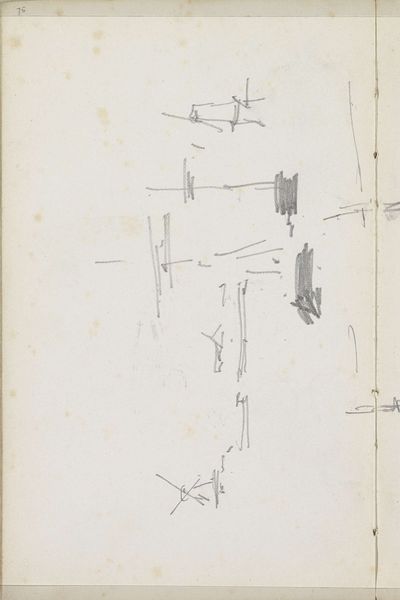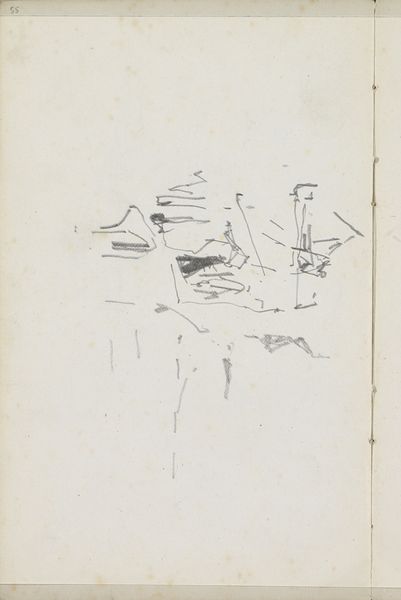
drawing, pencil
#
drawing
#
light pencil work
#
pen sketch
#
sketch book
#
hand drawn type
#
landscape
#
personal sketchbook
#
ink drawing experimentation
#
pen-ink sketch
#
pencil
#
pen work
#
sketchbook drawing
#
sketchbook art
Copyright: Rijks Museum: Open Domain
Editor: Here we have Willem Cornelis Rip’s drawing, “Windmolen De Nijverheid te Ravenstein,” possibly created between 1866 and 1922. It's a pencil sketch within what looks like a personal sketchbook. I'm immediately drawn to the contrast between the blank left page and the detailed, almost frenetic energy on the right. What symbolic weight might this windmill carry? Curator: Windmills are potent symbols. They represent industry, sure, but also ingenuity, perseverance against the elements. They speak of human intervention shaping the natural world. But look closer, at the *type* of windmill and the way Rip renders it. Does the looseness, the "light pencil work," suggest a fleeting moment or something more profound about the shifting industrial landscape of the time? What kind of memory might this image capture, or be designed to evoke? Editor: I see what you mean. The windmill itself seems quite traditional, almost nostalgic. But the raw, sketchy style… it's not romanticizing, is it? Maybe Rip is capturing something on the edge of being lost? Curator: Precisely! And note how it occupies only one page, while the facing page remains starkly empty. Could this emptiness symbolize a disappearing way of life, a fading memory? Or perhaps the vast, unwritten future juxtaposed with a firmly rooted past? This juxtaposition can lead us to interesting avenues to interpreting it. Editor: That’s fascinating! So, it's not just a simple landscape drawing, but a complex meditation on time, change, and cultural memory. I’ll definitely consider that as I look at similar pieces. Curator: Exactly. Symbols are never isolated. They exist within layers of meaning, historical context, and personal experience. Understanding this opens up so much within even a quick sketch.
Comments
No comments
Be the first to comment and join the conversation on the ultimate creative platform.

